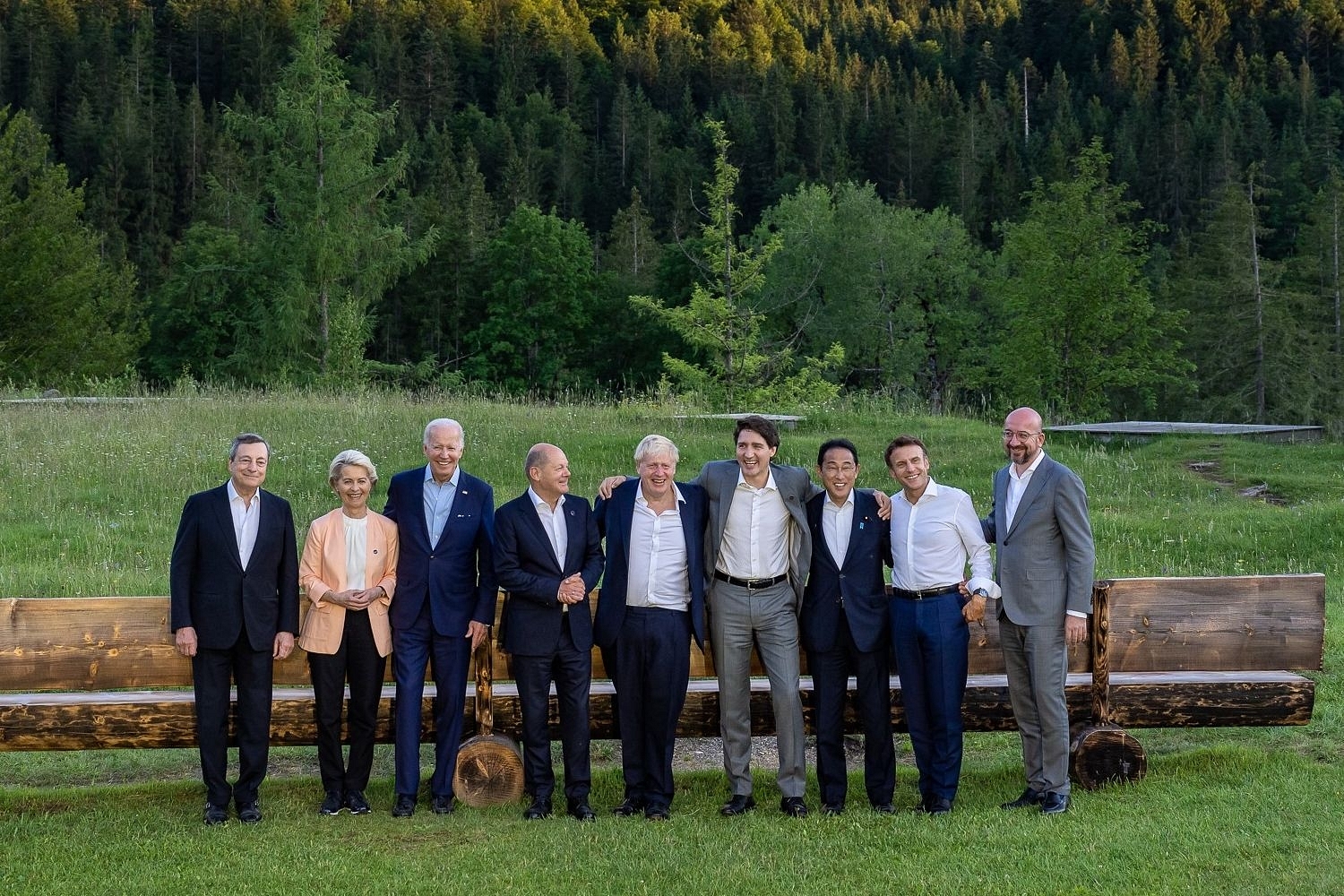Context
Price Cap On Russian Oil Will Harm G-7 More In The Short Run

G-7 leaders gather for a group photo in Germany (Photo: White House)
At the G-7 summit, world leaders sought a deal to impose a "price cap" on Russian oil. The objective is to limit Moscow’s revenues so that its ability to finance the war in Ukraine is curbed.
What this means: This mechanism would only allow transportation of Russian crude and petroleum products sold below an agreed-upon price threshold, which is to be enforced by imposing restrictions on insurance and shipping.
Is it possible? Russia may not agree to ship oil at capped prices, particularly if the cap is close to the production cost.
In that case, it would mean courting Saudi Arabia and Venezuela for increasing oil production, or
Risking high inflation even with the looming threat of an economic slowdown, or
Putting Europe through a brutal winter with low energy supply from Russia and renewed dependence on coal-powered plants.
Dependence on Russian oil: Whereas Europe relies on Russia for about one-third of its total oil imports, Russia is a relatively small source of oil for the US.
About two-thirds of the Russian supply goes to industrialised nations in Europe, North America, and Asia.
Half of Russia's exported oil is shipped to European countries, including Germany, Italy, the Netherlands, Poland, Finland, Lithuania, Greece, Romania, and Bulgaria.
Russian economy: Russia is one of the three top oil producers in the world, after the US and Saudi Arabia, but sometimes the order changes.
Russia produces close to 11 million barrels per day of crude oil. It uses roughly half of this output for its internal demand and exports 5-6 million barrels per day.
The country earned over $110 billion in 2021 from oil exports, twice as much as its earnings from natural gas exports.
The Russian budget is heavily dependent on revenues from oil exports, which accounted for 45 per cent of its total income in 2021.
Russia's strategy: It believes that holding its oil off the market for a while would do more damage to the economies of Europe and North America than to its own.
The Kremlin has already shown that it is willing to withhold supply of natural gas to some EU countries that refused to meet its payment demands.
Citing maintenance problems, Russia cut its gas supply to Germany by over 60 per cent earlier this month.
Russia, for now, has been able to dodge Western sanctions by diverting its energy exports, mainly crude, to China and India.
What's been done so far: While Canada became the first G-7 nation to impose a ban on importing Russian crude, it was largely a symbolic step as it imports just a trickle of Russian oil.
Similarly, on 8 March, the US announced a ban on all Russian oil imports, as only 10 per cent of its imported oil came from Russia.
The EU in May agreed to a phased ban on seaborne Russian oil shipments by December while temporarily allowing crude deliveries via pipeline to continue.
The UK plans to phase out the import of Russian oil and oil products by the end of 2022.
Challenges for G-7, EU: Along with the domestic challenges, there is uncontrolled inflation that is giving central banks a headache.
Ten EU member states have declared an emergency on the gas front, with the International Energy Agency warning that Europe could be without Russian energy in the second half of the year.
Europe has halved its imports of Russian gas, but the shift to renewables completely is a pipe dream, and alternate sources of energy have been exploited to their maximum potential.
Bottom line: The West is taking a path that will have a direct impact on inflation and economic revival post-pandemic. In the long run, it may be Russia's battle to lose, but, for now, the West has to suffer.
Support Swarajya's 50 Ground Reports Project & Sponsor A Story
Every general election Swarajya does a 50 ground reports project.
Aimed only at serious readers and those who appreciate the nuances of political undercurrents, the project provides a sense of India's electoral landscape. As you know, these reports are produced after considerable investment of travel, time and effort on the ground.
This time too we've kicked off the project in style and have covered over 30 constituencies already. If you're someone who appreciates such work and have enjoyed our coverage please consider sponsoring a ground report for just Rs 2999 to Rs 19,999 - it goes a long way in helping us produce more quality reportage.
You can also back this project by becoming a subscriber for as little as Rs 999 - so do click on this links and choose a plan that suits you and back us.
Click below to contribute.
Latest